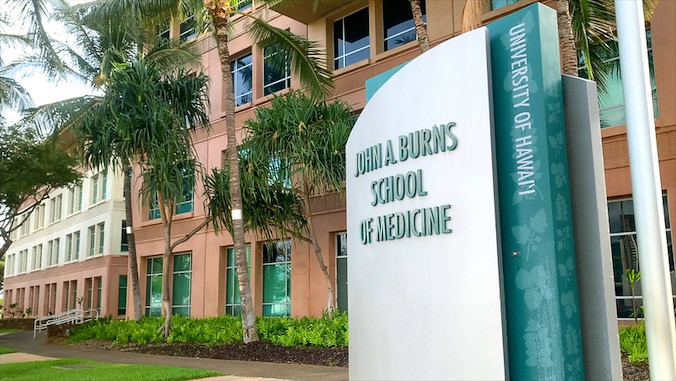Bioinformatics, Education Through Experience
We are part of John A. Burns School of Medicine, University of Hawaii at Manoa.


In addition to developing bioinformatics methods, we focus on identifying non-invasive biomarkers for the early detection of cancer and other diseases, as well as biomarkers that may protect against disease transmission. We also work on characterizing these biomarkers to predict clinical outcomes for various human diseases, including cancer. Our team integrates ‘omics’ data with clinical information, using advanced analytical techniques to provide a comprehensive understanding of disease mechanisms and patient outcomes.
Our lab combines bioinformatics and clinical research to bridge data science with medical practice. We aim to turn our findings into insights that improve patient care, from early detection to personalized treatments. Collaborating with experts across fields, we work to make impactful contributions to science and public health.
Our research focuses on advancing the field of bioinformatics through four key areas. First, we are dedicated to developing new computational methods that enhance the analysis and interpretation of complex biological data. These innovative approaches aim to push the boundaries of what is possible in data-driven biological research.
Recent Publications
Associations of Chronic Marijuana Use with Changes in Salivary Microbiome
Age-Related Hearing Impairment: Genome and Blood Methylome Data Integration Reveals Candidate Epigenetic Biomarkers
A prospective multi-cohort study identifies and validates a 5-gene peripheral blood signature predictive of immunotherapy response in non-small cell lung cancer
The legalization of marijuana (MJ) for medicinal and recreational use has raised concerns about its potential impact on health, including oral health. While MJ use has been linked to poor oral health, its effects on the composition of the oral microbiome remain unclear. This cross-sectional study analyzed saliva samples from chronic MJ users (n = 18) and nonusers (n = 20) to investigate MJ-related changes in salivary microbiome composition. We identified significant differences in the relative abundance of 16 taxa, including seven species, such as Megasphaera micronucliformis, Prevotella melaninogenica, and Streptococcus anginosus.
Age-related hearing impairment (ARHI) is a major planetary health burden that is in need of precision medicine for prevention, diagnosis, and treatment. The present study was set out to identify candidate epigenetic markers for ARHI. Associations of genetically predicted DNA methylation levels with ARHI risk were evaluated using two sets of blood DNA methylation genetic prediction models in 147,997 cases and 575,269 controls of European descent. A total of 1314 CpG sites (CpGs) were significantly associated with ARHI risk at a false discovery rate (FDR) <0.05, including 12 putatively causal CpGs based on fine-mapping analysis.
Immune checkpoint inhibitors (ICIs) have revolutionized the treatment landscape for non-small cell lung cancer (NSCLC). The variability in patient responses necessitates a blood-based, multi-cohort gene signature to predict ICI response in NSCLC.We performed transcriptomic profiling of peripheral blood mononuclear cell (PBMC) and buffy coat (BC) samples from three independent cohorts of NSCLC patients treated with ICIs: a retrospective cohort (PMBCR, n = 59), a retrospective validation cohort (BC, n = 44), and a prospective validation cohort (PBMCP, n = 42). We identified a 5-gene signature (UQCRB, NDUFA3, CDKN2D, FMNL1-DT, and APOL3) predictive of ICI response and validated its clinical utility in the prospective PBMCP cohort.